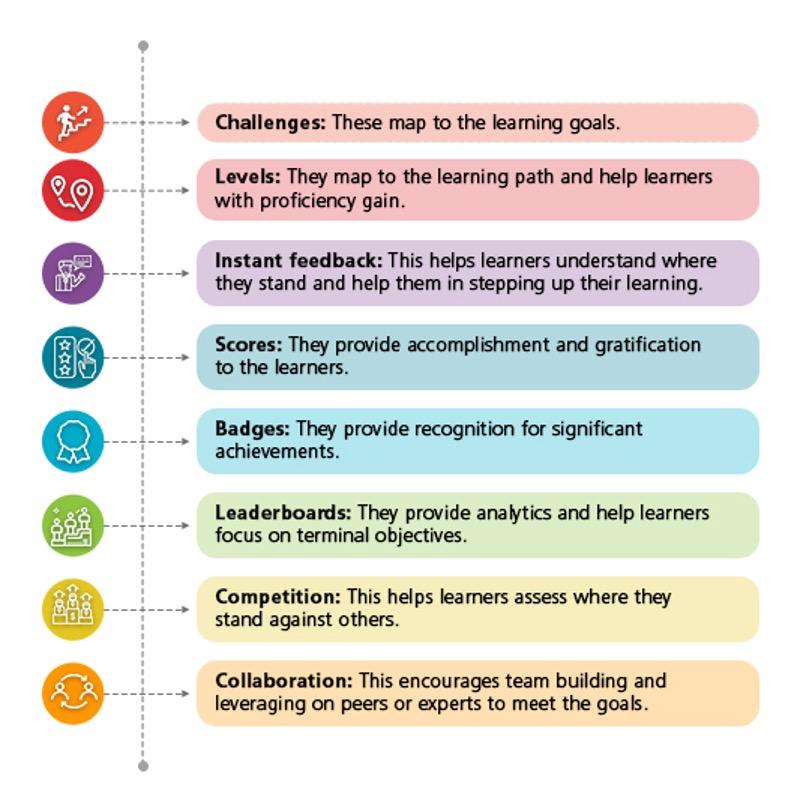Unlocking The Future of Educational Gamification: Trends, Benefits & What’s next
The classroom of tomorrow is no longer about chalk and talk—it’s interactive, digital, and, most excitingly, gamified. Educational gamification is revolutionizing how we learn by blending game-based elements into curricula, making learning experiences more engaging and effective. As digital natives fill today’s classrooms,the role of gamified learning platforms is set to expand rapidly. In this article, we delve into the current trends, key benefits, and the promising future of game-based learning to guide educators, decision-makers, and lifelong learners on this transformative journey.
What is Educational Gamification?
Educational gamification involves the integration of game mechanics—like points,badges,leaderboards,and challenges—into educational environments. Unlike traditional game-based learning,where games are used as the core learning tool,gamification enhances existing content with engaging,game-like elements. When applied effectively, it transforms passive students into active participants, boosting motivation, retention, and real-world skill-building.
Top Trends Shaping the Future of Educational Gamification
- Personalized Gamified Learning Experiences
Adaptive gamification tailors challenges, feedback, and content to individual learning styles and pacing, using data analytics and AI to enhance effectiveness.
- Augmented Reality (AR) and Virtual Reality (VR)
Immersive technologies are taking gamified education to the next level, offering real-time simulations and interactive environments that mimic real-life scenarios.
- integration with Learning Management Systems (LMS)
Seamless incorporation of gamified elements into popular LMS platforms increases accessibility and scalability for institutions worldwide.
- Microlearning and Mobile Gamification
Bite-sized learning modules, accessible anywhere, make use of quizzes, flashcards, and mini-challenges to maintain high engagement—perfect for self-paced learners.
- Social and collaborative Play
Multiplayer, team-based challenges foster collaboration and communication skills, turning learning into a shared adventure.
- Data-Driven Feedback and progress Tracking
Real-time dashboards, analytics, and reporting tools empower learners, teachers, and parents with actionable insights.
Key Benefits of Gamification in Education
transforming static lessons into interactive quests does more than add excitement—it delivers tangible educational advantages. Here are some of the most significant benefits of gamification in learning:
- Enhanced Motivation and Engagement
Game mechanics create rewarding feedback loops that keep students invested in their learning journey.
- Improved Knowledge Retention
Active participation and repetition—core to gaming—substantially boost memory and understanding.
- Instant Feedback
Learners receive immediate responses, helping them correct mistakes and reinforce strengths in real time.
- Cultivation of Critical 21st-Century Skills
Collaboration, critical thinking, adaptability, and digital literacy are all nurtured through sophisticated game dynamics.
- Accessible and Inclusive Learning
Gamification can accommodate diverse learning needs, breaking down barriers for students of different abilities.
Case Studies: Educational Gamification in Action
To understand the real-world impact, let’s look at some stellar implementations of gamified learning platforms across various educational settings:
Kahoot!
This widely popular platform turns quizzes into interactive, competitive games. Schools report increased participation, especially among students who are otherwise hesitant to raise their hands.
Duolingo
The language learning app leverages streaks,rewards,and competitive leaderboards to drive daily language practice,resulting in higher completion rates than traditional online courses.
Classcraft
By transforming the classroom into a role-playing game, students take on different avatars and earn points for teamwork, punctuality, and goal achievement—improving both academic and social skills.
Practical tips for Implementing Gamification in Learning Environments
- Start Small, Scale Smart
introduce elements like badges or point systems before moving toward more complex game structures.
- Align Game Mechanics with Learning Objectives
Ensure that rewards and challenges reinforce, rather than distract from, valuable educational goals.
- Foster Healthy Competition and Collaboration
Strike a balance between striving for top scores and working as part of a team to promote both motivation and social skills.
- Collect Feedback and Iterate
Seek input from students on what works and where to iterate, making gamified learning a constantly evolving process.
- Leverage Technology for Personalization
Use analytics for tracking progress and personalizing the learning journey for each student.
Looking Ahead: What’s Next for Educational Gamification?
As technology continues to evolve, so does the potential for future trends in educational gamification. Here’s what we can expect:
- Smarter AI-Driven experiences
Advanced artificial intelligence will personalize challenges, recommend content, and identify gaps more smoothly than ever before.
- Cross-Curricular gamification
Expect further integration across subjects like STEM,art,and social studies,blurring traditional boundaries through collaborative,story-driven adventures.
- global, Hybrid Learning Communities
Gamification will help bridge classrooms worldwide, fostering peer learning and intercultural exchange both in-person and remotely.
- Increased Focus on Emotional and Social Growth
Emotional intelligence, empathy, and ethical reasoning are becoming core to gamified scenarios, nurturing well-rounded global citizens.
Conclusion: Embrace the Game, Empower the Mind
The future of education is being rewritten in real time, and gamification is a driving force behind its change. By adopting educational gamification, schools, teachers, and learning enthusiasts can unlock deeper engagement, stronger learning outcomes, and essential life skills for the digital age. Whether you’re an educator ready to level up your classroom or a parent seeking effective learning tools, gamification is no longer just a trend—it’s an essential strategy for navigating the 21st-century learning landscape. The game is on. Are you ready to play?

